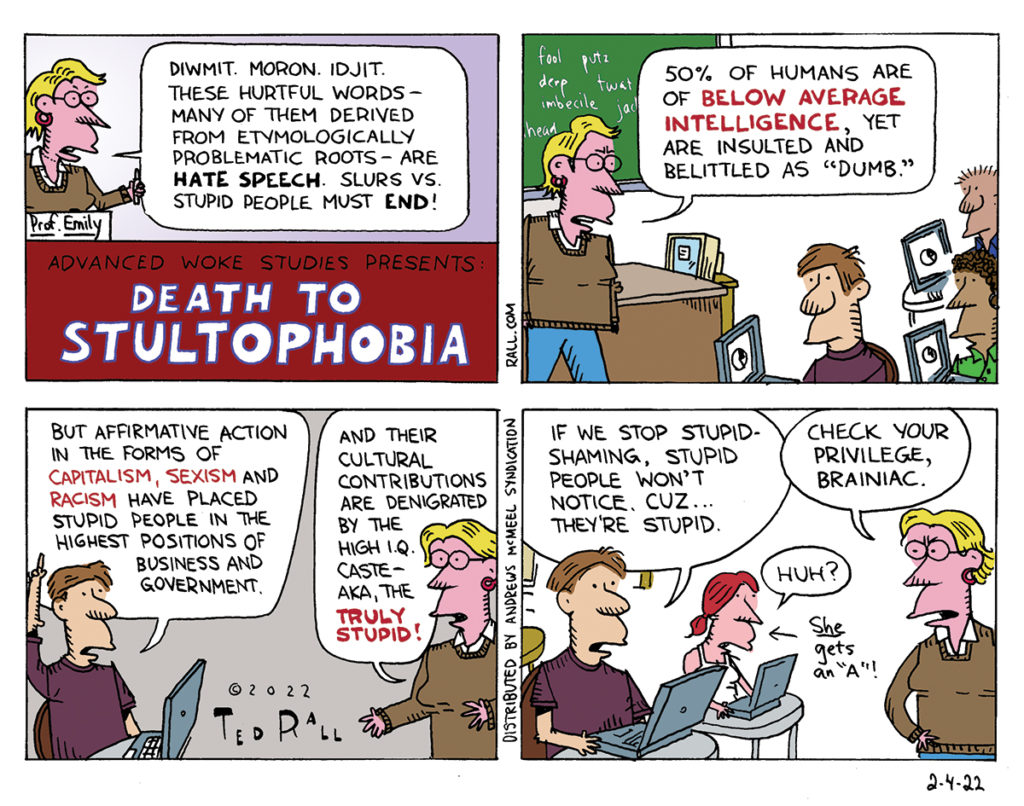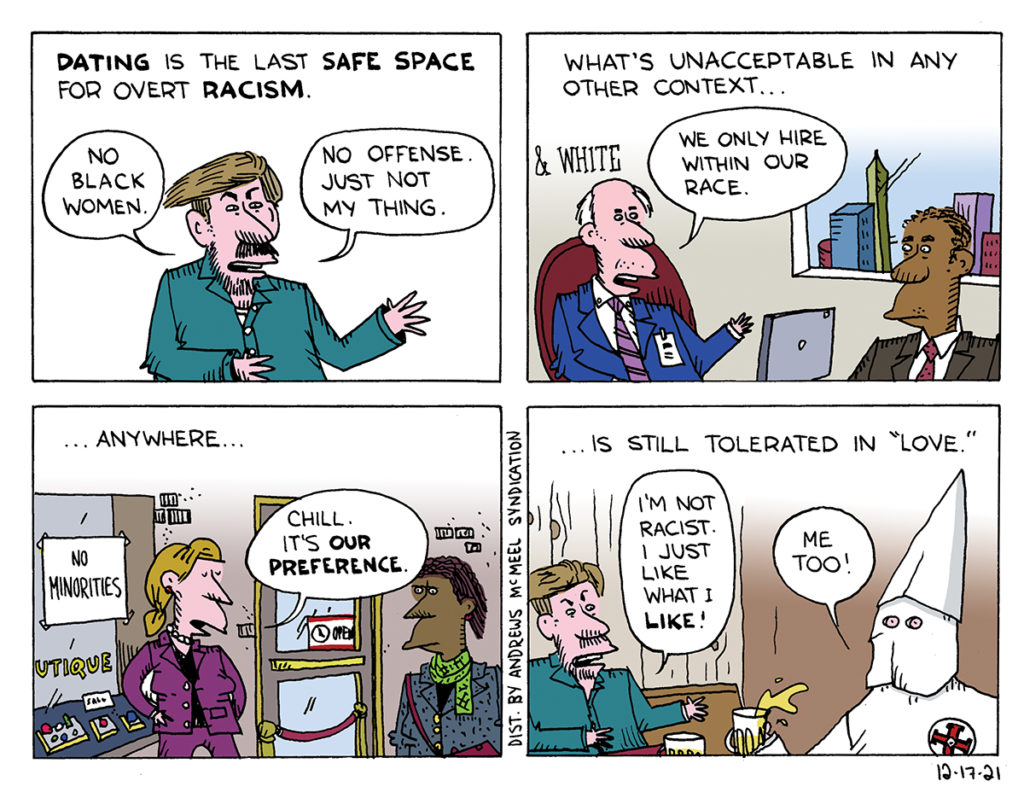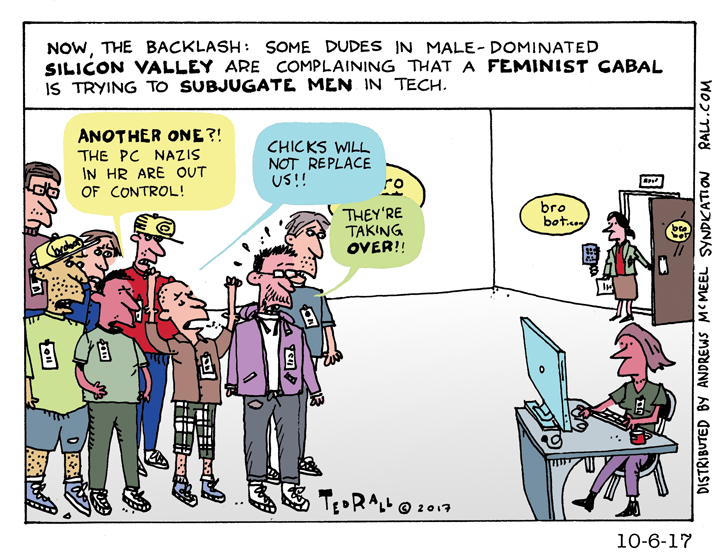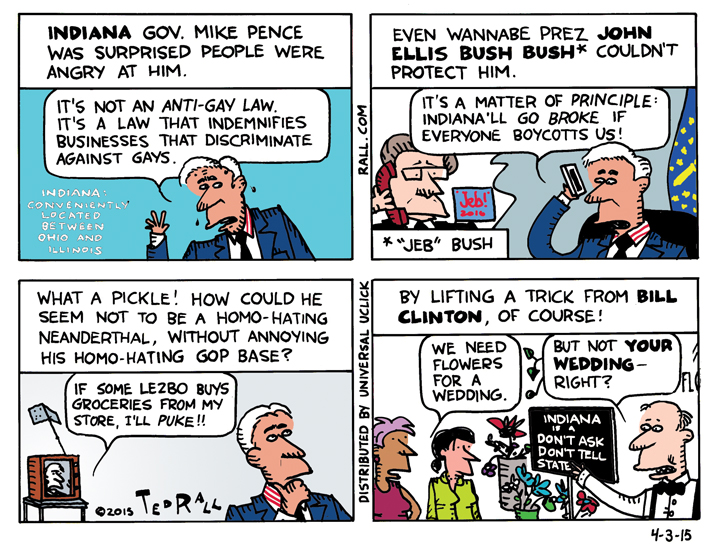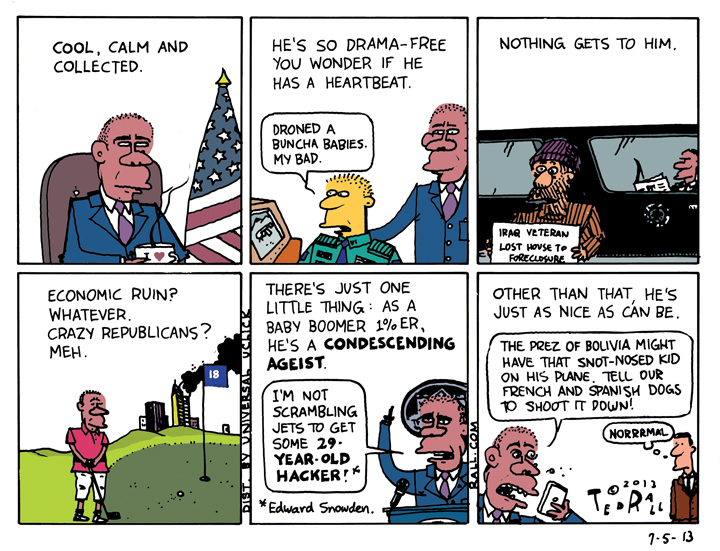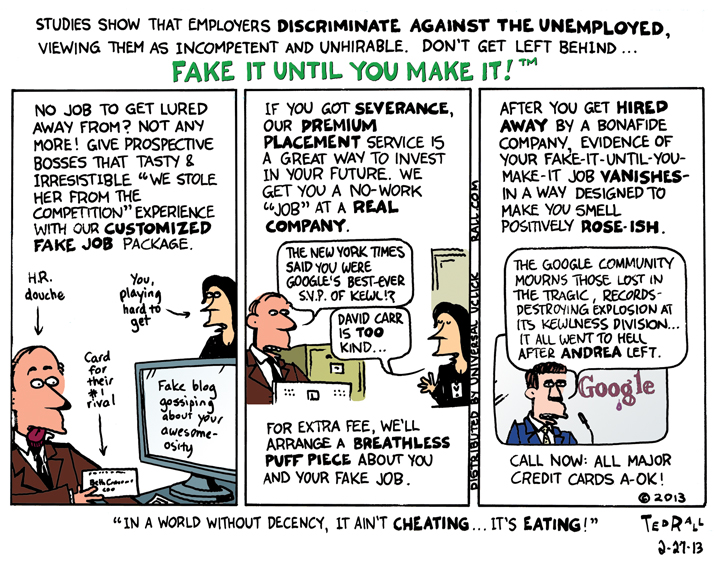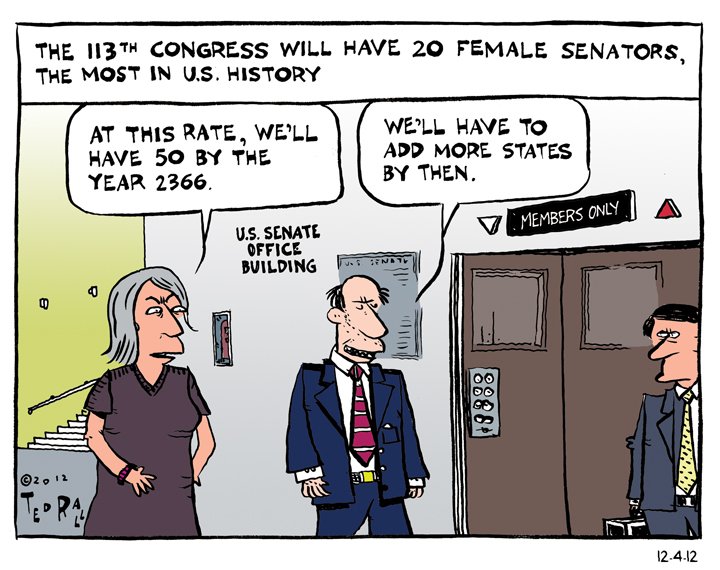They’re the last group of Americans it’s OK to mock and insult: stupid people. It’s time for woke people to stand up for these disadvantaged Americans!
Don’t Ask, Don’t Tell 2.0
Days after signing a “religious freedom” bill that allows businesses to be indemnified from lawsuits filed by LGBT people for discrimination, Indiana governor Mike Pence tried to backtrack for fear that his state would be vilified and face economic boycotts by the rest of the country. What compromise will he come up with to assuage his right-wing FoxNews-watching base, while appearing not to be that homophobic?
ANewDomain.net Essay: Don’t Hire Anyone Over 30: Ageism in Silicon Valley
Originally published at ANewDomain.net:
Most people know that Silicon Valley has a diversity problem. Women and ethnic minorities are underrepresented in Big Tech. Racist and sexist job discrimination are obviously unfair. They also shape a toxic, insular white male “bro” culture that generates periodic frat-boy eruptions (see, for example, the recent wine-fueled rant of an Uber executive who mused — to journalists — that he’d like to pay journalists to dig up dirt on journalists who criticize Uber. What could go wrong?)
After years of criticism, tech executives are finally starting to pay attention — and some are promising to recruit more women, blacks and Latinos.
This is progress, but it still leaves Silicon Valley with its biggest dirty secret: rampant, brazen age discrimination.
“Walk into any hot tech company and you’ll find disproportionate representation of young Caucasian and Asian males,” University of Washington computer scientist Ed Lazowska told The San Francisco Chronicle. “All forms of diversity are important, for the same reasons: workforce demand, equality of opportunity and quality of end product.”
Overt bigotry against older workers — we’re talking about anyone over 30 here — has been baked into the Valley’s infantile attitudes since the dot-com crash 14 years ago.
Life may begin at 50 elsewhere, but in the tech biz the only thing certain about middle age is unemployment.
The tone is set by the industry’s top CEOs. “When Mark Zuckerberg was 22, he said five words that might haunt him forever. ‘Younger people are just smarter,’ the Facebook wunderkind told his audience at a Y Combinator event at Stanford University in 2007. If the merits of youth were celebrated in Silicon Valley at the time, they have become even more enshrined since,” Alison Griswold writes in Slate.
It’s illegal, under the federal Age Discrimination in Employment Act of 1967, to pass up a potential employee for hire, or to fail to promote, or to fire a worker, for being too old. But don’t bother telling that to a tech executive. What used to be a meritocracy has become a don’t-hire-anyone-over-30 (certainly not over 40) — right under the nose of the tech media.
Which isn’t surprising. The supposed watchdogs of the Fourth Estate are wearing the same blinders as their supposed prey. The staffs of news sites like Valleywag and Techcrunch skew as young as the companies they cover.
A 2013 BuzzFeed piece titled ” What It’s Like Being The Oldest BuzzFeed Employee” (subhead: “I am so, so lost, every workday.”) by a 53-year-old BuzzFeed editor “old enough to be the father of nearly every other editorial employee” (average age: late 20s) reads like a repentant landlord-class sandwich-board confession during China’s Cultural Revolution: “These whiz-kids completely baffle me, daily. I am in a constant state of bafflement at BF HQ. In fact, I’ve never been more confused, day-in and day-out, in my life.” It’s the most pathetic attempt at self-deprecation I’ve read since the transcripts of Stalin’s show trials.
A few months later, the dude got fired by his boss (15 years younger): “This is just not working out, your stuff. Let’s just say, it’s ‘creative differences.’”
Big companies are on notice that they’re on the wrong side of employment law. They just don’t care.
Slate reports: “In 2011, Google reached a multimillion-dollar settlement in a…suit with computer scientist Brian Reid, who was fired from the company in 2004 at age 54. Reid claimed that Google employees made derogatory comments about his age, telling him he was ‘obsolete,’ ‘sluggish,’ and an ‘old fuddy-duddy’ whose ideas were ‘too old to matter.’ Other companies—including Apple, Facebook, and Yahoo—have gotten themselves in hot water by posting job listings with ‘new grad‘ in the description. In 2013, Facebook settled a case with California’s Fair Employment and Housing Department over a job listing for an attorney that noted ‘Class of 2007 or 2008 preferred.’”
Because the fines and settlements have been mere slaps on the wrist, the cult of the Youth Bro is still going strong.
To walk the streets of Austin during tech’s biggest annual confab, South by Southwest Interactive, is to experience a society where Boomers and Gen Xers have vanished into a black hole. Photos of those open-space offices favored by start-ups document workplaces where people over 35 are as scarce as women on the streets of Kandahar. From Menlo Park to Palo Alto, token fortysomethings wear the nervous shrew-like expressions of creatures in constant danger of getting eaten — dressed a little too young, heads down, no eye contact, hoping not to be noticed.
“Silicon Valley has become one of the most ageist places in America,” Noam Scheiber reported in a New Republic feature that describes tech workers as young as 26 seeking plastic surgery in order to stave off the early signs of male pattern baldness and minor skin splotches on their faces.
Whatever you do, don’t look your age — unless your age is 22.
“Robert Withers, a counselor who helps Silicon Valley workers over 40 with their job searches, told me he recommends that older applicants have a professional snap the photo they post on their LinkedIn page to ensure that it exudes energy and vigor, not fatigue,” Scheiber writes. “He also advises them to spend time in the parking lot of a company where they will be interviewing so they can scope out how people dress.”
The head of the most prominent start-up incubator told The New York Times that most venture capitalists in the Valley won’t take a pitch from anyone over 32.
In early November, VCs handed over several hundred thousand bucks to a 13-year-old.
Aside from the legal and ethical considerations, does Big Tech’s cult of youth matter? Scheiber says hell yes: “In the one corner of the American economy defined by its relentless optimism, where the spirit of invention and reinvention reigns supreme, we now have a large and growing class of highly trained, objectively talented, surpassingly ambitious workers who are shunted to the margins, doomed to haunt corporate parking lots and medical waiting rooms, for reasons no one can rationally explain. The consequences are downright depressing.”
One result of ageism that jumps to the top of my mind is brain drain. Youthful vigor is vital to success in business. So is seasoned experience. The closer an organization reflects society at large, the smarter it is.
A female colleague recently called to inform me that she was about to get laid off from her job as an editor and writer for a major tech news site. (She was, of course, the oldest employee at the company.) Naturally caffeinated, addicted to the Internet and pop culture, she’s usually the smartest person in the room. I see lots of tech journalism openings for which she’d be a perfect fit, yet she’s at her wit’s end. “I’m going to jump off a bridge,” she threatened. “What else can I do? I’m 45. No one’s ever going to hire me.” Though I urged her not to take the plunge, I couldn’t argue with her pessimism. Objectively, though, I think the employers who won’t talk to her are idiots. For their own sakes.
Just a month before, I’d met with an executive of a major tech news site who told me I wouldn’t be considered for a position due to my age. “Aside from being stupid,” I replied, “you do know that’s illegal, right?”
“No one enforces it,” he shrugged. He’s right. The feds don’t even keep national statistics on hiring by age.
The median American worker is age 42. The median age at Facebook, Google, AOL and Zynga, on the other hand, is 30 or younger. Twitter, which recently got hosed in an age discrimination lawsuit, has a median age of 28.
Big Tech doesn’t want you to know they don’t hire middle-aged Americans. Age data was intentionally omitted from the recent spate of “we can do better” mea culpa reports on company diversity.
It’s easy to suss out why: they prefer to hire cheaper, more disposable, more flexible (willing to work longer hours) younger workers. Apple and Facebook recently made news by offering to freeze its female workers’ eggs so they can delay parenthood in order to devote their 20s and 30s to the company.
The dirty secret is not so secret when you scour online want ads. “Many tech companies post openings exclusively for new or recent college graduates, a pool of candidates that is overwhelmingly in its early twenties,” Verne Kopytoff writes in Fortune.
“It’s nothing short of rampant,” said UC David comp sci professor Norm Matloff, about age discrimination against older software developers. Adding to the grim irony for Gen Xers: today’s fortysomethings suffered reverse age discrimination — old people in power screwing the young — at the hands of Boomers in charge when they were entering the workforce.
Once too young to be trusted, now too old to get hired.
Ageist hiring practices are so over-the-top illegal, you have to wonder: do these jerks have in-house counsel?
Kopytoff: “Apple, Facebook, Yahoo, Dropbox, and video game maker Electronic Arts all recently listed openings with ‘new grad’ in the title. Some companies say that recent college graduates will also be considered and then go on to specify which graduating classes—2011 or 2012, for instance—are acceptable.”
The feds take a dim view of these ads.
“In our view, it’s illegal,” Raymond Peeler, senior attorney advisor at the Equal Employment Opportunity Commission, told Kopytoff. “We think it deters older applicants from applying.” Gee, you think? But the EEOC has yet to smack a tech company with a big fine.
The job market is supposed to eliminate efficiencies like this, where companies that need experienced reporters fire them while retaining writers who are so wet behind the ears you want to check for moss. But ageism is so ingrained into tech culture that it’s part of the scenery, a cultural signifier like choosing an iPhone over Android. Everyone takes it for granted.
Scheiber describes a file storage company’s annual Hack Week, which might as well be scientifically designed in order to make adults with kids and a mortgage run away screaming: “Dropbox headquarters turns into the world’s best-capitalized rumpus room. Employees ride around on skateboards and scooters, play with Legos at all hours, and generally tool around with whatever happens to interest them, other than work, which they are encouraged to set aside.”
No matter how cool a 55-year-old you are, you’re going to feel left out. Which, one suspects, is the point.
It’s impossible to overstate how ageist many tech outfits are.
Electronic Arts contacted Kopytoff to defend its “new grad” employment ads, only to confirm their bigotry. The company “defended its ads by saying that it hires people of all ages into its new grad program. To prove the point, the company said those accepted into the program range in age from 21 to 35. But the company soon had second thoughts about releasing such information, which shows a total absence of middle-aged hires in the grad program, and asked Fortune to withhold that detail from publication. (Fortune declined.)”
EA’s idea of age diversity is zero workers over 35.
Here is one case where an experienced, forty- or fifty- or even sixtysomething in-house lawyer or publicist might have saved them some embarrassment — and legal exposure.
In the big picture, Silicon Valley is hardly an engine of job growth; they haven’t added a single net new job since 1998. “Big” companies like Facebook and Twitter only hire a few thousand workers each. Instagram famously only had 13 when it went public. They have little interest in contributing to the commonweal. Nevertheless, tech ageism in the tiny tech sector has a disproportionately high influence on workplace practices in other workspaces. If it is allowed to continue, it will spread to other fields.
It’s hard to see how anything short of a massive class-action lawsuit — one that dings tech giants for billions of dollars — will make Big Tech hire Xers, much less Boomers.
SYNDICATED COLUMN: Reparations for Blacks? For an Exceptionally Vicious Nation, Just a Start
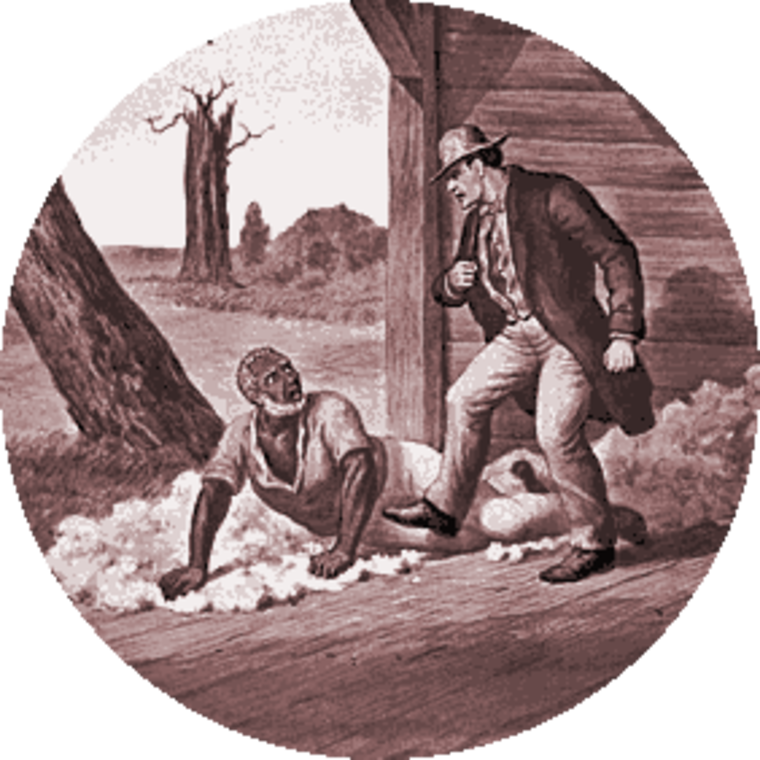
In the latest of periodic revivals of the argument that the United States ought to issue reparations to African-Americans as compensation for slavery, Ta-Nehisi Coates writes in The Atlantic: “Until we reckon with our compounding moral debts, America will never be whole.”
That discrimination, poverty and genocide are at the heart of the black American experience is not in doubt — at least not in the minds of people of moderate intelligence and good will. That tens of millions of blacks continue, “even” after the election of the first black president, to suffer systemic racism along with its attendant symptoms — schools starved of funding, grinding poverty, police brutality, a viciously skewed judiciary, bigotry in every aspect of life from the workplace to housing to romance — is obvious to all who care to open their eyes the slightest bit.
Reparations are obviously justified. Moreover, they are normative; in the United States, aggrieved parties routinely seek and receive compensation for their injuries and economic losses via class-action lawsuits and the occasional U.S. Treasury payout. During the 1990s, for example, Congress issued $20,000 reparations checks to 82,210 Japanese-Americans and their heirs in order to compensate them for shipping them to concentration camps during World War II (and, in many cases, stealing their homes and businesses).
Better ridiculously late than never; better insultingly small than nothing.
Other U.S. reparations precedents include North Carolina residents forcibly sterilized during the mid 20th century as part of a nationwide eugenics program targeted at minorities and the mentally disabled (they are receiving $50,000 each), victims of the infamous Tuskegee untreated-syphilis experiment ($24,000 to $178,000), and blacks killed in the 1923 mass lynching at Rosewood, Florida ($800,000 for those forced to flee).
Coates admits that complications arise from his proposal: “Who will be paid? How much will they be paid? Who will pay?”
Should blacks who are not descendants of American slaves, like President Obama, receive reparations? What about wealthy blacks — should a wealthy black person receive a payout while members of other races go hungry? Should poor blacks get more than rich blacks? What about “mixed race” people — if your father was black and your mother was white, should you get half a check?
These are good questions, but as a white man (not descended from Americans who lived in the United States during slavery), I don’t enjoy the political standing to ponder them, much less answer them.
Whatever the details of a theoretical reparation scheme, my only objection to the idea overall would be that no amount of money would or could be enough. Reading through Coates’ survey of centuries of savage rape, abuse and degradation, one can’t help but ask, how could $100,000 make up for a single ancestor turned away from restaurants or rejected for promotions or unable to attend college due to the color of her skin? $1 million? $10 million?
Not that doing the right thing is going to happen any time soon. “For the past 25 years, Congressman John Conyers Jr., who represents the Detroit area, has marked every session of Congress by introducing a bill calling for a congressional study of slavery and its lingering effects as well as recommendations for ‘appropriate remedies,’ Coates writes.
The bill “has never—under either Democrats or Republicans—made it to the House floor,” he says, because “we are not interested.”
Well, I’m interested. And I’d be paying, not getting.
Coates is, if anything, too polite. Congress’ disinterest in trying to atone for America’s original sin of slavery, he says, “suggests our concerns are rooted not in the impracticality of reparations but in something more existential.”
That existential something, of course, is that the United States and its economic infrastructure are the products of so much brutality, stealing, lying and exploitation, of so many hundreds of millions of people not only within “our” borders but — as the center of a vast economic and military empire — that it would not only be impossible to compensate all of its victims without going broke many times over, reparations would force American political leaders to concede that we are indeed an exceptional nation, if only in our violence and perfidy.
One place to start compiling lists of victims and heirs to consider for reparations would be Howard Zinn’s “People’s History of the United States.” All 49 states (except Hawaii) belonged to Native Americans; any fair assessment of compensation would give the total real estate value back to them, plus four centuries of interest and penalties for pain, suffering, and opportunity cost. Hawaii was stolen from native Hawaiians by an invasion force of U.S. Marines.
Chinese railroad workers were abused, discriminated against and in some cases murdered; America’s freight travels the rails they laid down. Except for slavery, Latinos too have suffered many of the same horrors, and still do, as Coates enumerates. There are the victims of America’s countless wars of colonial conquest in North America and around the world: Filipino patriots tortured to death in the early 20th century, two million Vietnamese, Koreans, Afghans, Iraqis and Yemenis — honestly, this is like one of those Oscar speeches where there isn’t enough time to thank everyone who made this “wonderful” exceptional country possible.
By all means, cut everyone a check, then close up shop.
(Support independent journalism and political commentary. Subscribe to Ted Rall at Beacon.)
COPYRIGHT 2014 TED RALL, DISTRIBUTED BY CREATORS.COM
Alberto Gonzales’s Civil Rights Division Lite: Taking the “Justice” Out of Justice Department
Posted by Mikhaela Reid
Taste the new “Justice” Department’s Civil Rights Division Lite! Now with 99% less: hate crimes prosecution, voting rights enforcement and police brutality investigations! Super-Action-Packed with Loyal Bushies, Wiretapping and Religious Extremists! It’s a Yum-Tastic Justice Department makeover!
The Bush administration has laid waste to the Justice Department on a large scale, as the scandals over the replacement of high-performing federal prosecutors with “loyal Bushies” and that whole warrantless wiretapping nastiness have shown.
The Bush makeover of the Civil Rights Division is similarly extreme. The pre-Bush Justice Department Civil Rights Division was founded in 1957. The Division protected voting rights and enforced anti-discrimination laws, with a particular focus on discrimination based on race and national origin. From the Division website:
The Division enforces the Civil Rights Acts of 1957, 1960, 1964, and 1968; the Voting Rights Act of 1965, as amended through 1992; the Equal Credit Opportunity Act; the Americans with Disabilities Act; the National Voter Registration Act; the Uniformed and Overseas Citizens Absentee Voting Act; the Voting Accessibility for the Elderly and Handicapped Act; and additional civil rights provisions contained in other laws and regulations. These laws prohibit discrimination in education, employment, credit, housing, public accommodations and facilities, voting, and certain federally funded and conducted programs.
Or do they? Under Bush and Gonzales, Justice has shifting funding, focus and resources to more Dubyafied priorities. As the New York Times reported this week (“Justice Dept. Reshapes Its Civil Rights Mission”):
In recent years, the Bush administration has recast the federal government’s role in civil rights by aggressively pursuing religion-oriented cases while significantly diminishing its involvement in the traditional area of race.
Read the whole article, but here are some particular horrors:
DISCRIMINATION
The old Civil Rights Division (Civil Rights Clasic, if you will) fought discrimination in hiring. The Civil Rights Lite Division defends the right of religious groups like the Salvation Army to discriminate (see “Charity Cites Bush Help in Fight Against Hiring Gays” and “Court OKs Religious Hiring Bias by Federally Backed Charities”).
HATE CRIMES
Civil Rights Classic lent federal enforcement weight to the prosecution of hate crimes cases: KKK attacks, lynchings, and more. Civil Rights Lite has diverted that funding to a pet cause of the Christian Right. Again from the NYT, the Civil Rites Lite Division is…
Taking on far fewer hate crimes and cases in which local law enforcement officers may have violated someone’s civil rights. The resources for these traditional cases have instead been used to investigate trafficking cases, typically involving foreign women used in the sex trade, a favored issue of the religious right.
Certainly trafficking cases deserve funding–but not at the expense of victims of racism, hate crimes and police brutality. Trafficking cases used to and should be handled elsewhere.
VOTING RIGHTS
Civil Rights Classic defended the voting rights of people of color. Civil Rites Lite suppresses the voting rights people of color through new voter ID requirements and baseless “voter fraud” case–and has even pursued its first claim of voter intimidation against white people. As John Nichols writes in The Nation (“Curing the Rot at Justice”):
The Brennan Center for Justice and the Lawyers’ Committee for Civil Rights Under Law have uncovered evidence of what they describe as “a much broader strategy on the part of the Administration to use federal agencies charged with protecting voting rights to promote voter suppression and influence election rules so as to gain partisan advantage in battleground states.” There is now a compelling case that the White House used the Justice Department’s Civil Rights and Criminal divisions and the Election Assistance Commission to create a false perception of widespread voter fraud to justify initiatives–stringent voter identification laws, crackdowns on voter registration drives and pre-election purges of eligible voters from the rolls–designed to disenfranchise the poor, minorities, students and seniors.
The New York Times reports on this as well. Civil Rights Lite is:
Sharply reducing the complex lawsuits that challenge voting plans that might dilute the strength of black voters. The department initiated only one such case through the early part of this year, compared with eight in a comparable period in the Clinton administration.
Trouble is, only the federal government has the resources to deal with these voting dilution cases. Oh well–it’s not like black voters get disenfranchised anymore, right? Too bad, but they’ve got a new kind of case to focus on:
The civil rights division also brought the first case ever on behalf of white voters, alleging in 2005 that a black political leader in Noxubee County, Miss., was intimidating whites at the polls.
RELIGIOUS FREEDOM TRUMPS ALL OTHER FREEDOMS
But back to the Salvation Army. If you visit the Justice Department website, you’ll read very little about racist discrimination and the ongoing disenfranchisement of voters of color. Instead, you read about this exciting “special initiative” from Alberto “Geneva Conventions Are Quaint” Gonzales, “The First Freedom Project”:
Religious liberty is often referred to as the “First Freedom” because the Framers placed it first in the Bill of Rights. Yet it is not merely first in order: it is a fundamental freedom on which so many of our other freedoms rest.
Forget freedom of speech, forget freedom of the press and freedom of assembly, and most especially freedom from unreasonable search and seizure: the first and most important freedom is the freedom of religious organizations to receive government funding for firing gay people.
Some of the other evidence of Civil Rights Lite cited by the New York Times:
Supporting groups that want to send home religious literature with schoolchildren; in one case, the government helped win the right of a group in Massachusetts to distribute candy canes as part of a religious message that the red stripes represented the blood of Christ.
Conservative religious groups who love the taste of Civil Rights Lite say that the weight of the federal government is no longer needed to combat racism and discrimination–silly stuff like that can be left up to local authorities. Of course, local authorities often lack the resources, will or perspective to fight racism. Historically, local authorities in the South often deliberately turned their backs on racist attacks and civil rights violations, and I’m not so sure those days are totally behind us. And that whole federal ignoring of civil rights and the issues of black people worked out great during Katrina, didn’t it?
HIRING LOYAL BUSHIES
Oh, and then there’s the hiring thing. We all remember sweet little Monica “I crossed the line” Goodling, trying so hard to make everything harmonious at Justice by hiring only “loyal Bushies”. The NYT analyzed department statistics and found that Civil Rights Classic hired lawyers with impressive backgrounds and qualifications. Civil Rights Lite hires lawyers from religious law schools (like Pat Robertson’s academically questionable Regent Law) who play up their conservative and religious credentials as much as possible.
Finally, while we’re on the topic of Civil Rights, I figured I’d close with Bush channeling his role model Martin Luther King, Jr.:
Cross-posted at Boiling Point Blog.
P.S. Have you bought Attack of the 50-Foot Mikhaela! Cartoons by Mikhaela B. Reid (with foreword by Ted Rall) yet? Why not?

